What are Squish and Swirl and why are they important in a diesel engine?
The “Killing a Duramax” series makes its triumphant return with part 14! Gale’s been busy with the design of the new L5P cam as he tries the get the most horsepower while cranking out new ideas. Gale collaborated with Comp Cams in the development of this new high-performance Banks-spec camshaft and explains how he analyzes each step in the 4-stroke process of a diesel.
Gale reveals why “squish” and “swirl” are so important to the proper diesel combustion as well as other important factors like valve timing, duration, overlap, and even goes over the details on why he prefers a stock piston versus one with valve reliefs.
This is definitively the best information you’ll ever get about diesel combustion outside of engineering school!
Below, you’ll find the squish and swirl diagrams used in the episode.

View of a standard piston with cross section. “This slick-top piston is what you’ll see in virtually every production diesel engine. There will be no valve reliefs on the top of the piston.”
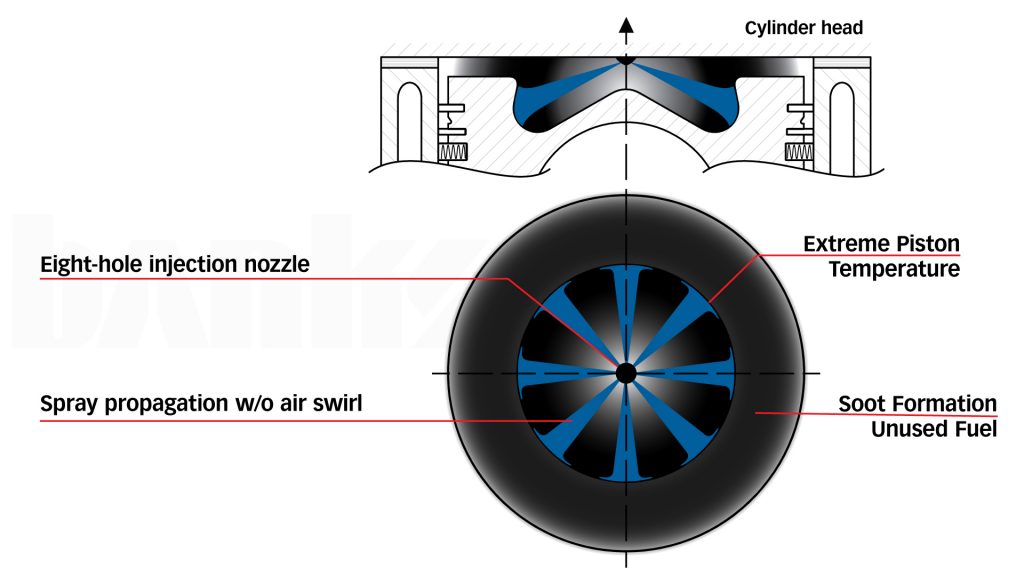
“In this shot the piston has risen up the bore to the point on injection.” With no swirl there is nothing to help blend the fuel with the air, producing soot and high temperatures.
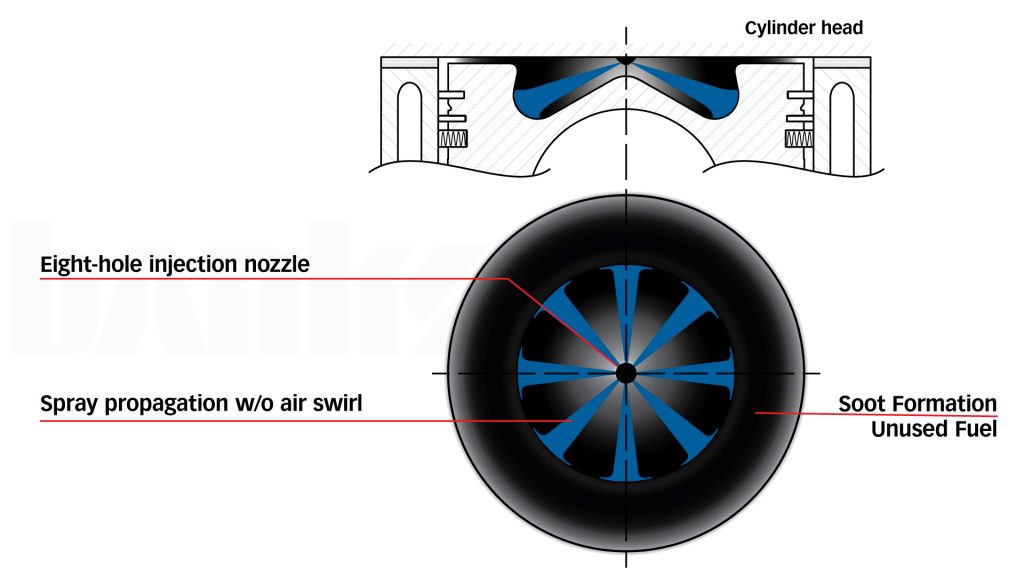
Shot of top dead center still spraying fuel and creating excessive soot.
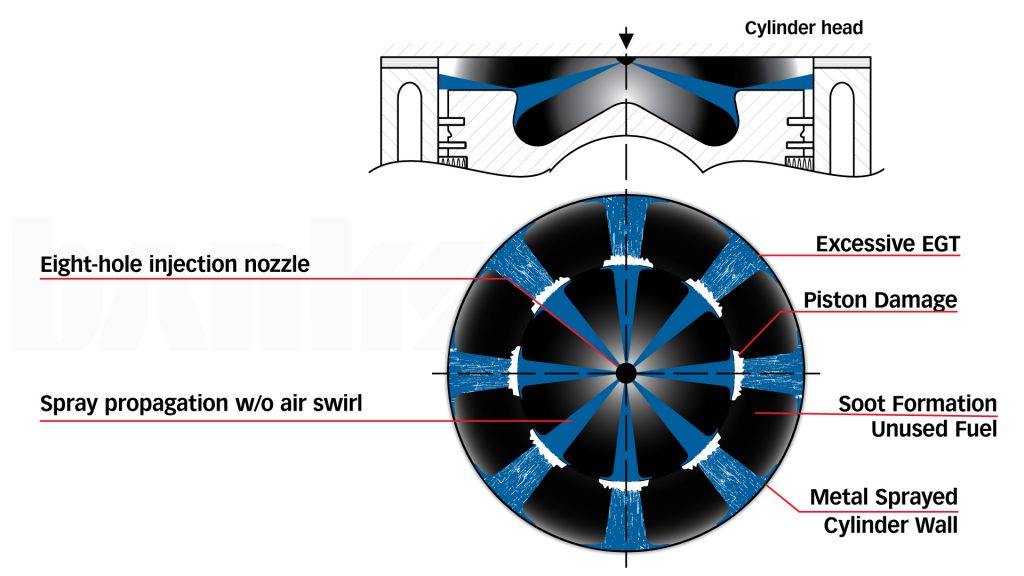
Extended injections shown. “The piston will get to a position that the spray angel starts breaking out of the combustion chamber.” The result is excessive EGT, piston damage and fuel that sprays the cylinder wall along with continued soot formation. “This engine is toast!”
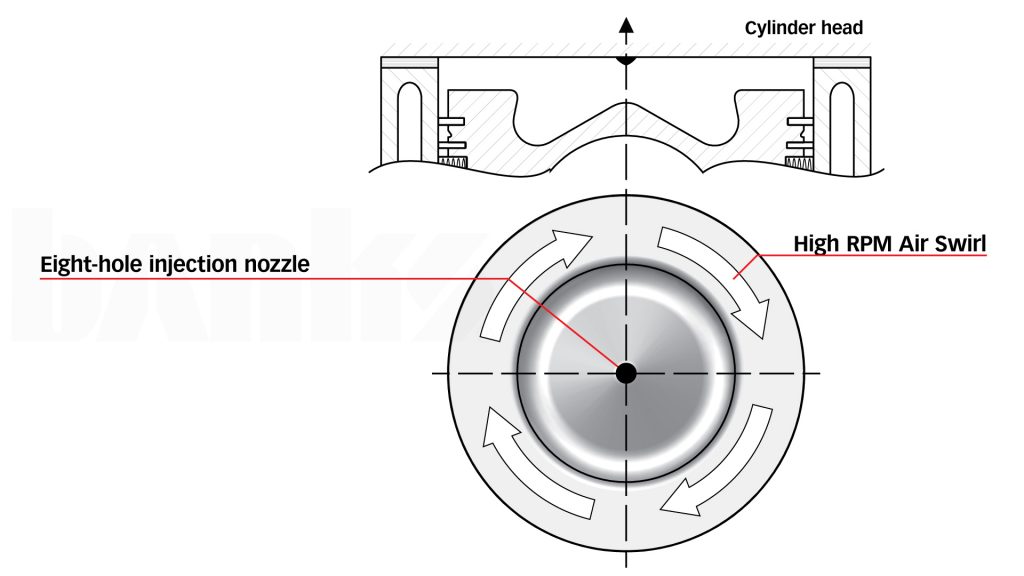
This is a view of a piston prior to top dead center with proper swirl. “Now let me show you how to do it correctly. The swirl rotation is clockwise in a Duramax.”
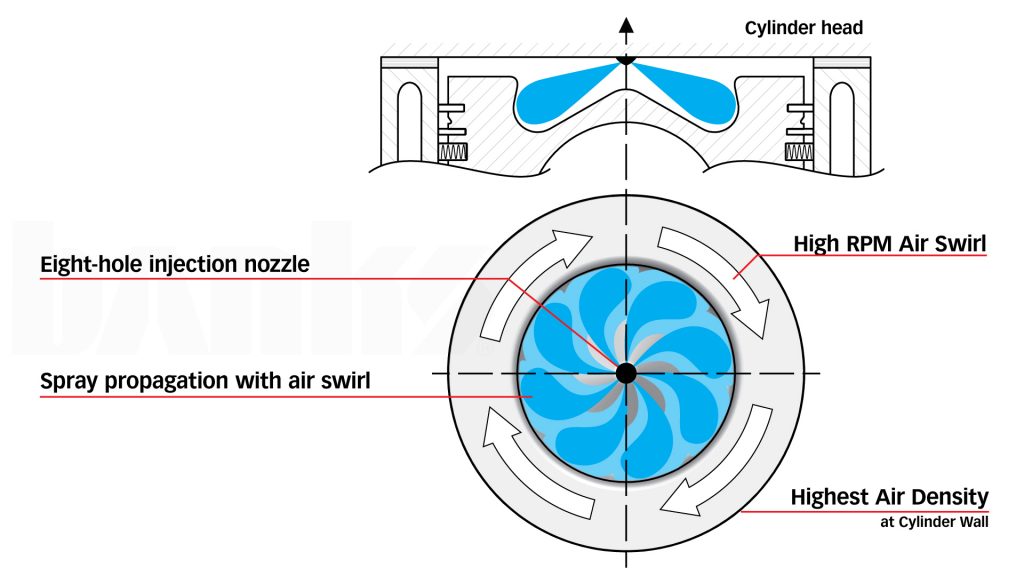
Injection starts with added high RPM swirl causing a better air/fuel ratio. Swirl is happening from the center of the piston outward, injection plumes are deflected and contained within the bowl.
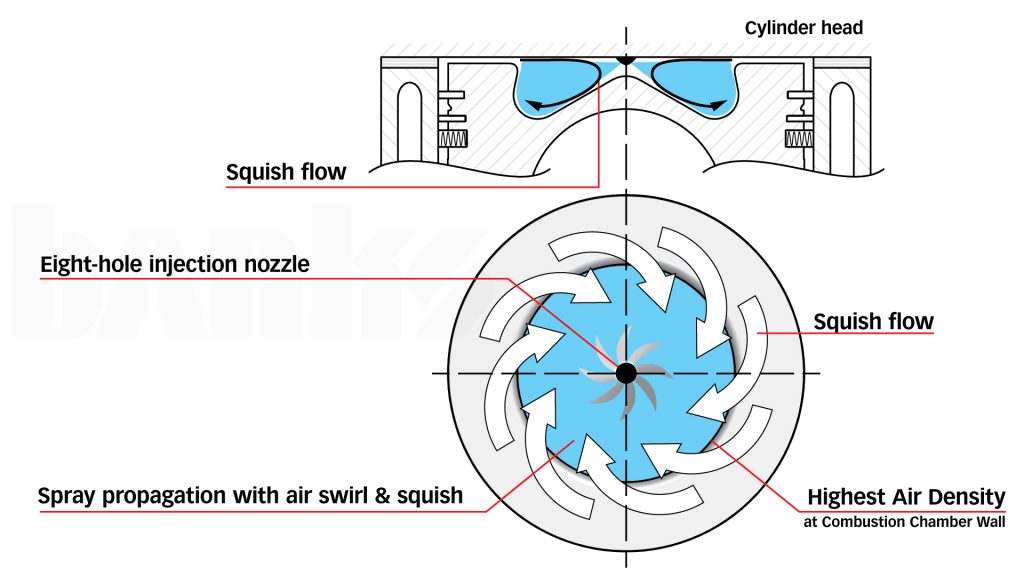
As the piston reaches top dead center we get squish. “It squishes, or squeezes out, the rotating gases into the combustion chamber. What’s happening here is that high density air that was out around the cylinder wall is now squeezed in and you’re injecting into the air density, so there’s lots of oxygen present.”
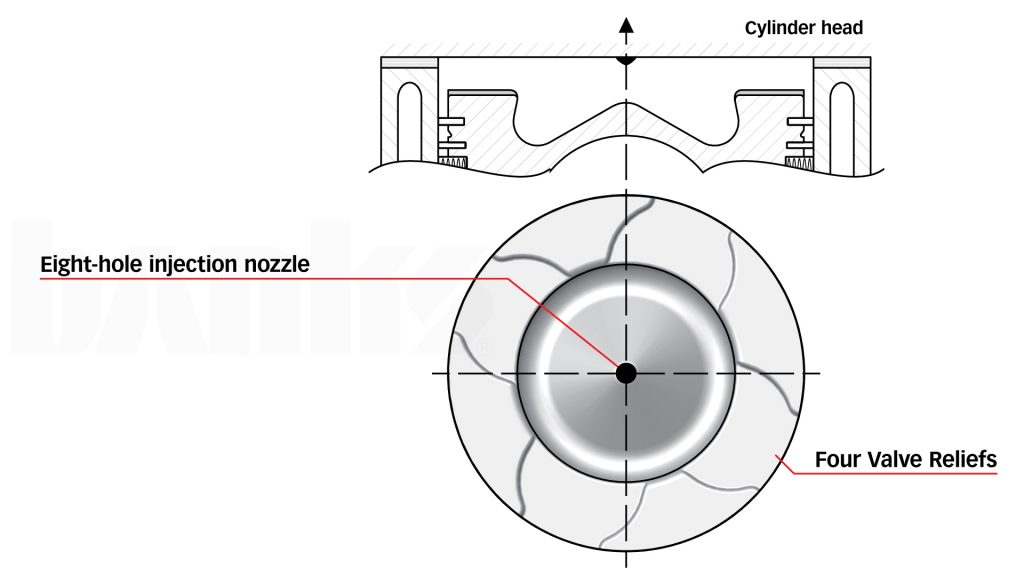
Shown is a piston designed with four valve reliefs used with aggressive cams for those who want valves more open at top dead center than could be afforded with a stock piston profile. The tradeoff is that it destroys swirl.
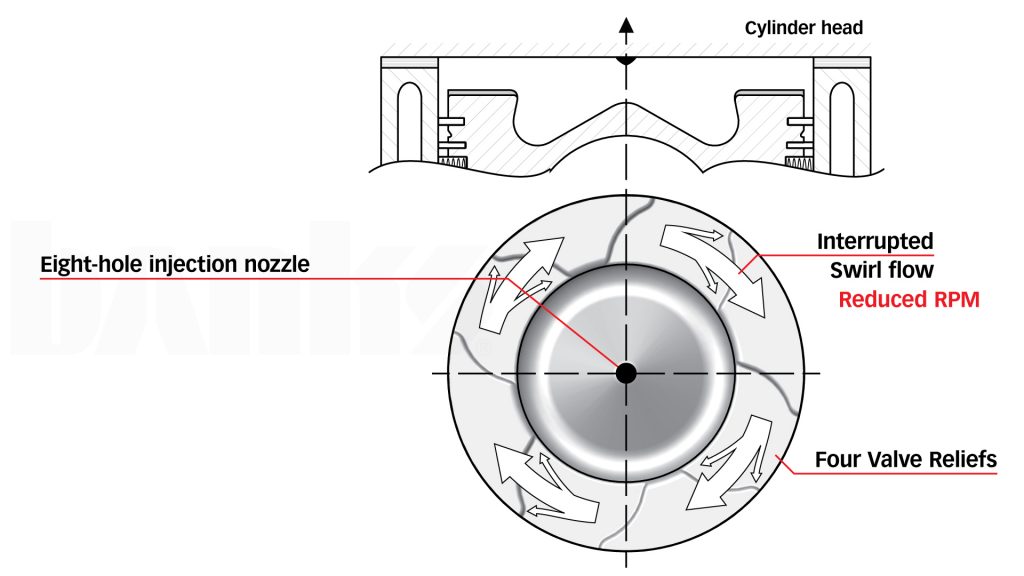
The steps in the relief cause a brake that interrupts and slows the swirl.
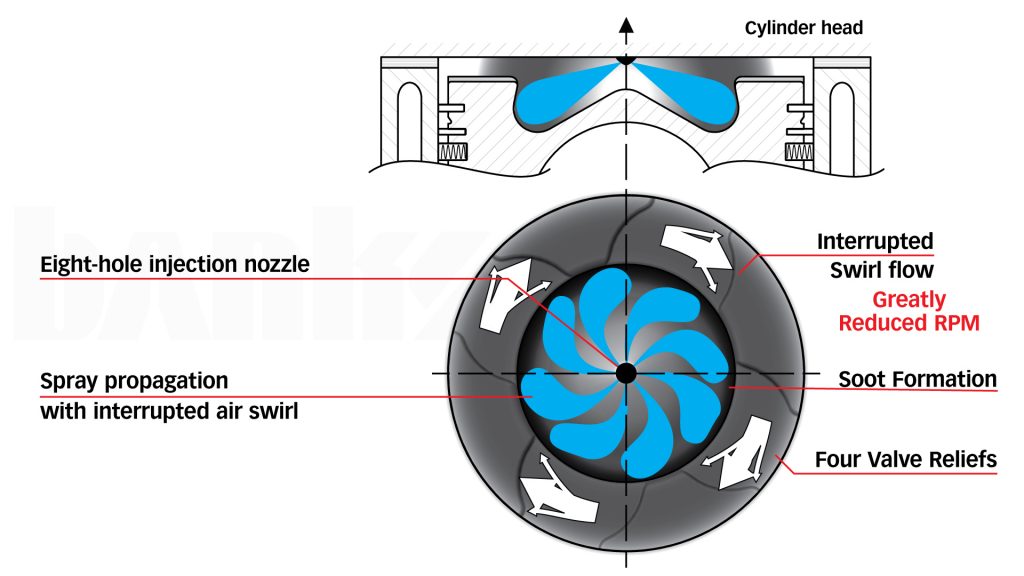
As injection occurs. “The beautiful squish of that rotating air at the perimeter of the cylinder wall in kind of screwed up by these valve reliefs, so you start getting some soot formation and you’re not getting quite the mix in the combustion chamber.”
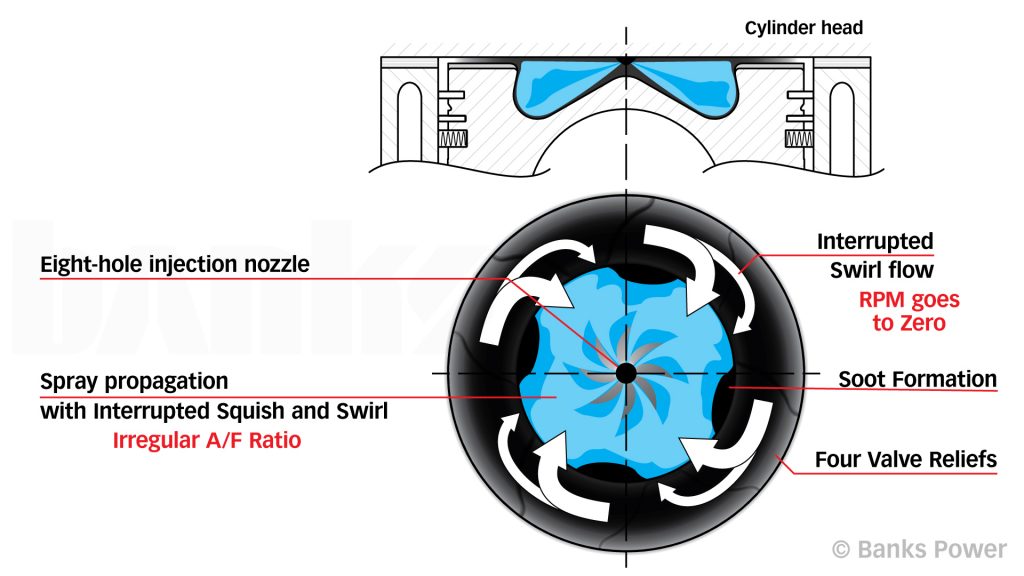
Top dead center shown. “Now we’ve effectively got some of the squish in to the combustion chamber, but there are pockets where it’s denied that additional air.”
- RAM 6.7L Grid Heater Failure Explained - July 7, 2023
- How and when to remove your PedalMonster throttle controller. - March 9, 2023
- Banks Spin To Win Contest Rules - June 29, 2022


